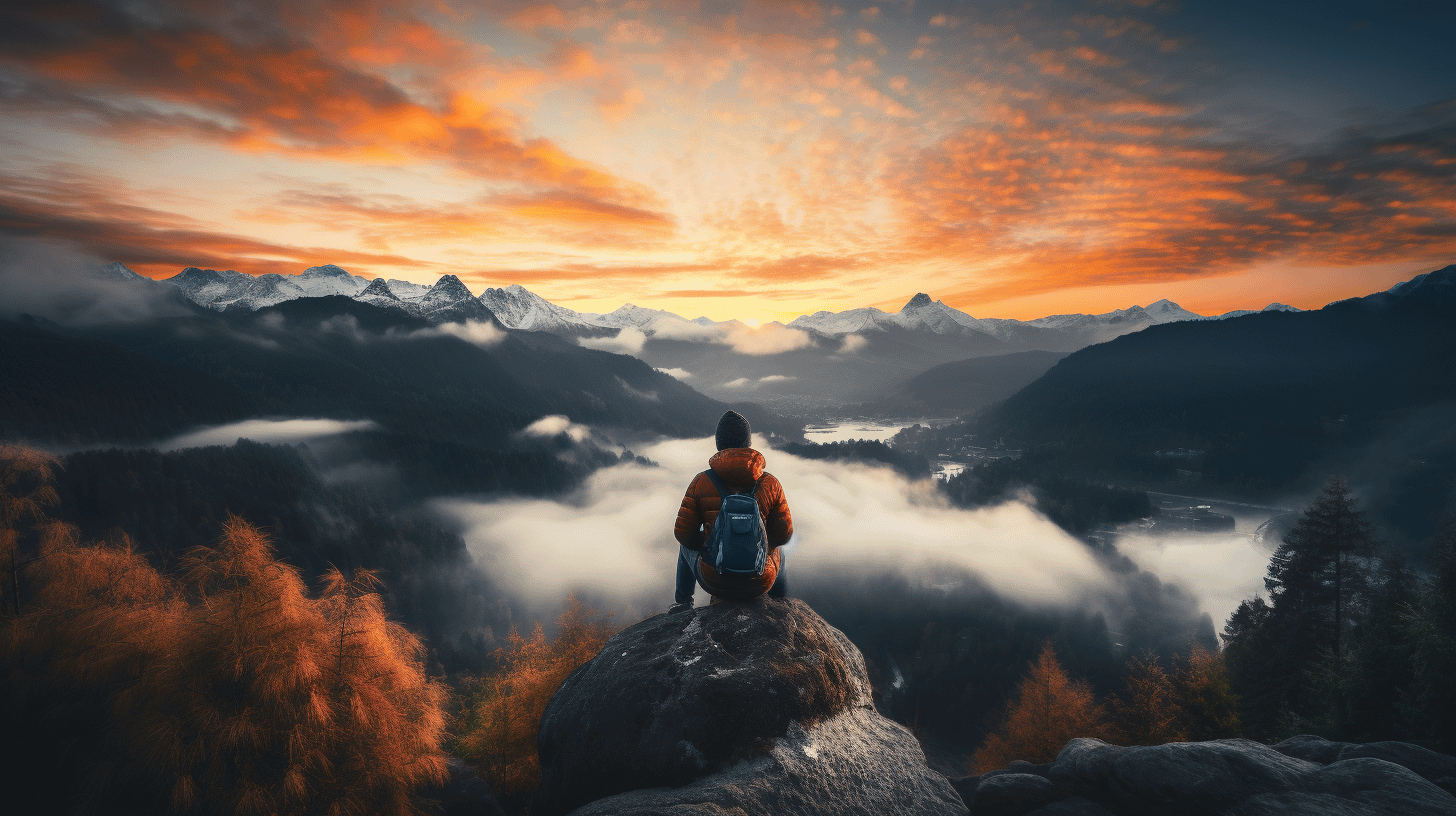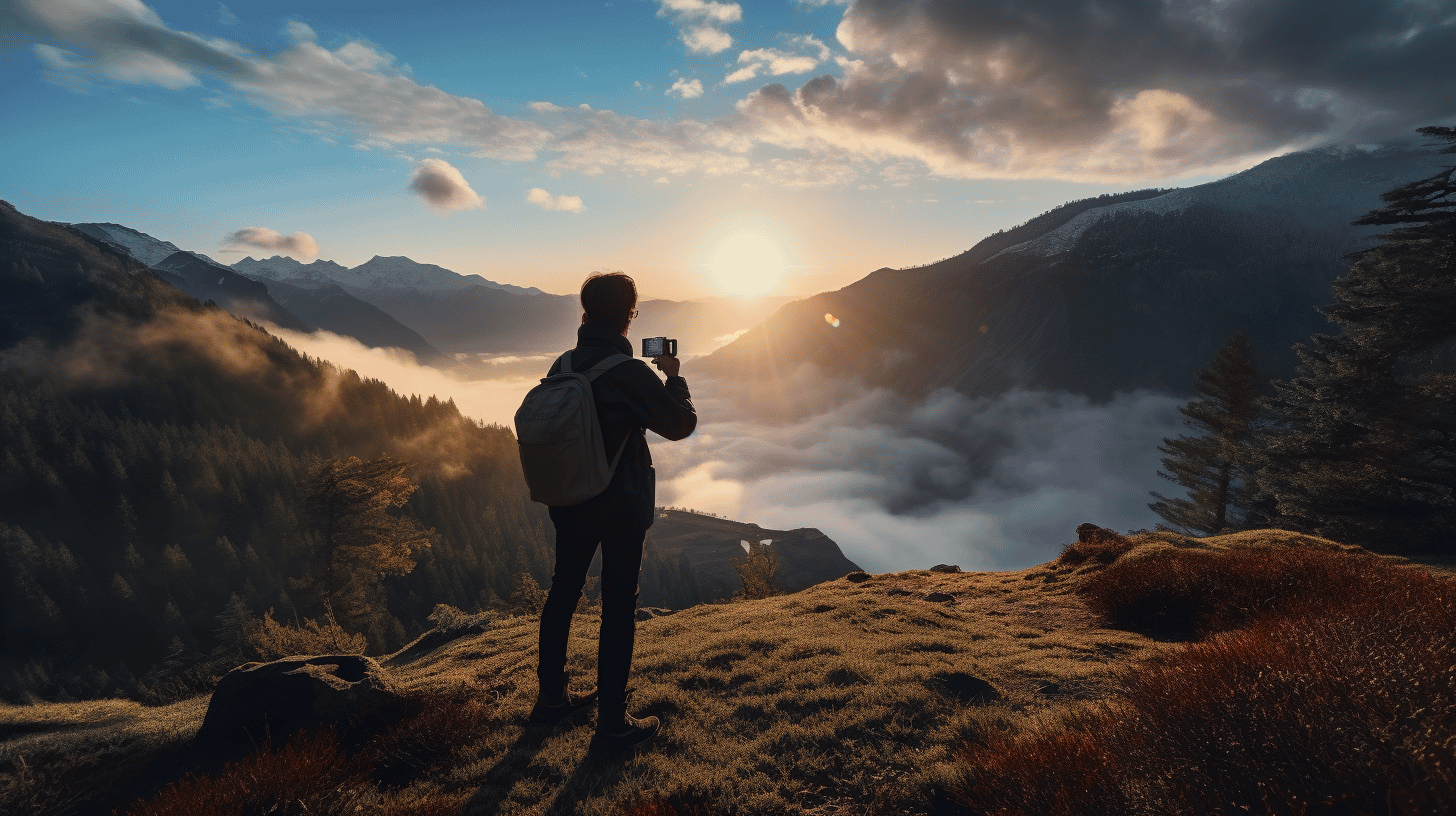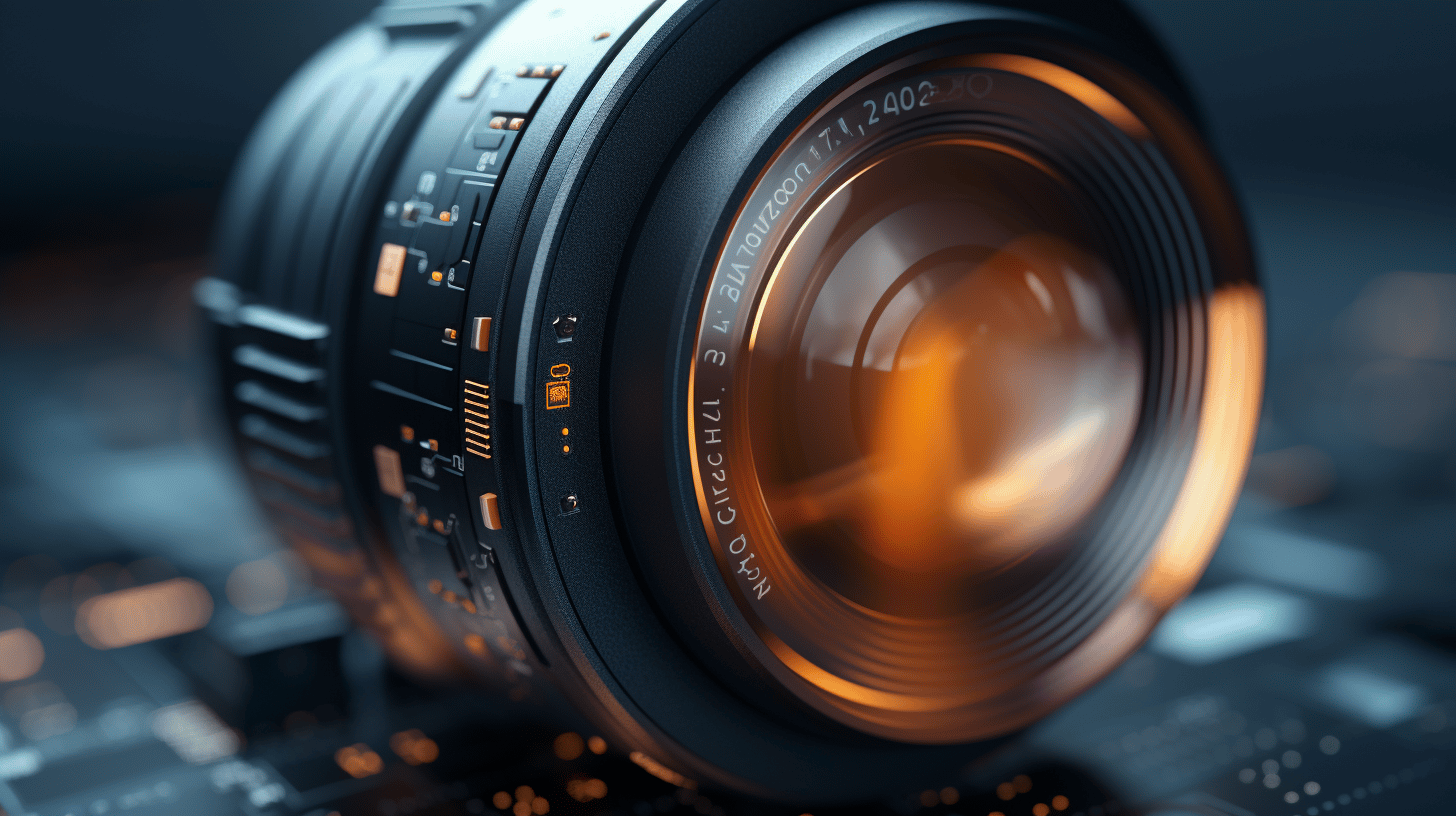The world of photography has undergone a significant transformation with the advent of Artificial Intelligence (AI). AI-powered technologies have revolutionized the way we capture, edit, and share photographs, making photography more accessible to amateur enthusiasts and professionals alike. From automated photo editing to advanced autofocus capabilities, AI has paved the way for exciting technological advancements in the field.
In this article, we will explore the impact of AI on amateur photography, delving into the ways it has shaped the photography market, the technological innovations it has brought about, the emerging trends it has sparked, and its implications for photography employment and workflow. Additionally, we will touch on the acceptance of AI within the photography community and the applications of AI in drone photography.
So, whether you’re a photography enthusiast curious about the AI-driven tools and techniques that can enhance your skills, or a professional photographer wanting to understand the changes AI brings to the industry, this article will provide valuable insights into the world where artificial intelligence and photography intersect. Get ready to dive into the exciting world of AI and its impact on the art of capturing moments!
AI Shaping the Photography Market
In recent years, artificial intelligence (AI) has become a driving force in various industries, revolutionizing the way we work and interact with technology. The photography market is no exception to this trend. With the advancement of AI-powered advancements, photographers and enthusiasts alike are witnessing significant changes in the way they capture, edit, and share their images.
Global Market Projections for AI in Photography
The global market for AI in photography is anticipated to reach a staggering $900 million by 2023. This exponential growth can be attributed to the numerous benefits that AI brings to the table. From enhancing image quality to automating post-processing tasks, AI-powered tools are making photography more accessible and efficient than ever before.
With AI algorithms capable of recognizing patterns, identifying objects, and understanding complex visual contexts, photographers can now rely on smart features to enhance their images. These features include automatic exposure adjustment, intelligent subject tracking, and advanced noise reduction algorithms. The result is a seamless shooting experience that allows photographers to capture stunning and professional-grade images with minimal technical skill.
Democratization of Photography via AI
One of the most significant impacts of AI in the photography industry is the democratization of this art form. Traditionally, photography was considered a skill that required years of practice and technical expertise. However, AI-powered advancements have changed the game by leveling the playing field and enabling aspiring photographers to produce high-quality images without extensive training or experience.
AI-powered cameras and smartphones have simplified the process of capturing visually pleasing photographs. With features like scene detection, automatic composition analysis, and real-time image adjustments, amateur photographers can now create images that rival those taken by professionals. This accessibility has opened up new opportunities for individuals who were previously limited by their lack of technical knowledge or expensive equipment.
Furthermore, AI algorithms have also revolutionized the field of photo editing. With AI-powered software, users can now apply automatic adjustments to their images, such as color correction, exposure optimization, and even intelligent retouching. These tools allow users to transform their ordinary snapshots into visually stunning works of art, without the need for advanced editing skills or extensive post-processing knowledge.
In conclusion, AI-powered advancements are reshaping the photography market by providing photographers with powerful tools and features. As the global market continues to grow at a rapid pace, it is evident that AI will play a crucial role in the future of photography. Whether it’s enhancing image quality, automating post-processing tasks, or democratizing the art form, AI is revolutionizing how we capture, edit, and share the moments that matter most. To learn more about AI’s impact on photography, visit AI-Powered Advancements in Photography.
Technological Innovations in Photography through AI
From automated photo editing to revolutionizing autofocus technology, AI has brought about a wave of technological innovations in the field of photography. This has not only made it easier for photographers to capture stunning images but has also empowered amateurs and smartphone users to take professional-quality photos. In this article, we will explore some of the key advancements in photography made possible through AI.
Automated Photo Editing
One of the most significant ways AI has transformed photography is through automated photo editing. With the help of AI algorithms, photographers can now have their images automatically adjusted for exposure, contrast, and color balance. This means that even those with minimal editing skills can achieve visually appealing results without the need for extensive manual adjustments. Whether you want to enhance the vibrancy of colors or correct lighting issues, AI-powered editing tools can streamline the process and save valuable time.
Revolution in Autofocus Technology
Another area where AI has made significant strides is autofocus technology. Thanks to AI, cameras can now achieve rapid and accurate focusing, resulting in sharper and more detailed images. AI algorithms analyze the scene and intelligently determine the subject, allowing the camera to lock onto it with precision. This technology is particularly beneficial in scenarios where speed is crucial, such as sports photography or capturing fast-moving subjects. The improved autofocus capabilities provided by AI have undoubtedly revolutionized the way photographers capture moments.
Smartphone AI Cameras
AI has not only revolutionized traditional cameras but has also played a vital role in enhancing smartphone photography. With the integration of AI algorithms, smartphones are now equipped with powerful camera capabilities that rival those of dedicated cameras. From advanced scene recognition to intelligent image stabilization, AI enables smartphones to perform professional-level photography tasks. Whether you are capturing a stunning landscape or taking a portrait, your smartphone’s AI camera can help you achieve impressive results with ease.
Integration of AI tools in Traditional Software
AI has even made its way into traditional software used by photographers. Tools like Adobe Photoshop’s generative fill, which uses AI algorithms, are now seamlessly integrated into editing software. This allows photographers to make complex edits effortlessly and achieve exceptional results. Whether you need to remove an unwanted object from a photo or fill in missing details, AI-powered tools can provide intelligent suggestions and automate time-consuming tasks. The integration of AI into traditional software has undoubtedly expanded the creative possibilities for photographers, making their workflow more efficient and productive.
In conclusion, AI has brought about a wave of technological innovations in photography. From automated photo editing to improved autofocus technology and smartphone AI cameras, the possibilities for photographers have expanded significantly. The integration of AI tools into traditional software further enhances photographers’ creative potential. As AI continues to advance, we can expect even more exciting developments in the field of photography, empowering photographers of all skill levels to capture stunning moments with ease.
AI Revolutionizes Photo Editing
Emerging Trends in AI and Photography
In the ever-evolving world of technology, one field that has witnessed significant advancements is artificial intelligence (AI). With its ability to learn, reason, and problem-solve like humans, AI has found its way into various industries, including photography. Now, let’s explore three emerging trends in AI and photography that are revolutionizing the way we capture and edit images.
Generative AI in Photography
One of the most exciting trends in AI and photography is the rise of generative AI. Generative AI refers to the use of algorithms and machine learning models to create original, realistic images. This technology can generate new visual content that appears stunningly lifelike, even though it doesn’t actually exist.
AI-powered generative models, such as deep learning neural networks, have been trained on vast amounts of data to analyze patterns and generate unique images. These models can mimic various artistic styles, replicate the look and feel of different light conditions, and even create entirely new surreal compositions.
Impact on Professional Photography
The integration of AI into photography has had both positive and negative implications for professional photographers. On one hand, AI-enabled smartphones with powerful cameras and built-in editing tools have made it easier for amateur photographers to capture stunning images without the need for expensive equipment or extensive technical knowledge.
As a result, the demand for traditional professional photography services has declined in certain areas. However, professional photographers can leverage AI technology to enhance their own work by utilizing AI-powered image editing tools. These tools can automate time-consuming tasks like color correction, noise reduction, and image retouching, allowing photographers to focus more on their creative vision and storytelling.
AI-generated Artistic Expressions
Another exciting trend emerging from the marriage of AI and photography is the creation of new artistic expressions and techniques. AI algorithms can analyze and understand the visual elements of an image, enabling them to generate unique and unconventional compositions that transcend traditional photography norms.
Through the use of generative AI, photographers and artists can experiment with new styles, explore abstract concepts, and push the boundaries of creativity. AI-generated photography opens up a realm of possibilities, enabling artists to unleash their imagination and create captivating visuals that challenge the viewer’s perception.
In conclusion, the convergence of AI and photography is reshaping the way we capture, edit, and experience images. Generative AI is revolutionizing artistic expression, while AI-powered tools are transforming both amateur and professional photography. As technology continues to advance, we can expect even more exciting developments in the field, pushing the boundaries of what we once thought possible.
Additional Information:
- Generative AI is projected to grow annually at 42% in the photography industry.
- AI-enabled smartphones have led to a decline in demand for traditional professional photography services.
- AI-generated photography is expected to create new artistic expressions and techniques.
AI-Driven Image Editing Growth
Impact of AI on Photography Employment and Workflow
With the rapid advancements in AI technology, it comes as no surprise that the field of photography is experiencing a significant transformation. AI-driven tools and software are revolutionizing the way photographers work, from automating certain tasks to providing real-time feedback on editing. This article explores the impact of AI on photography employment and workflow, shedding light on the changes that both photographers and the industry as a whole are experiencing.
Employment Projections in Photography
As AI continues to make strides in the photography industry, one might assume that employment opportunities for photographers would decline. However, employment projections tell a different story. As of 2023, the employment of photographers is projected to grow by 4%, despite the rise of AI technologies[1]. This suggests that, rather than replacing photographers altogether, AI is augmenting their skills and enabling them to focus on more creative aspects of their work.
AI Streamlining Photographers’ Workflows
In the past, photographers had to spend countless hours on tasks such as culling, sorting, and categorizing their images. With the advent of AI, these mundane and time-consuming tasks can now be automated, allowing photographers to allocate their time more efficiently. AI performs complex editing tasks within fractions of a second, streamlining photographers’ workflows[2]. By automating these repetitive tasks, AI frees up photographers to focus on what they do best: capturing and creating stunning imagery.
Real-time Feedback in Photo Editing
One of the most remarkable impacts of AI on photography is its ability to provide real-time feedback during the editing process. In the past, photographers had to rely on trial and error to achieve their desired results. AI’s instant editing capabilities are transforming photo editing approaches, with real-time feedback becoming commonplace[3]. This means that photographers can make adjustments and see the results immediately, saving them time and helping them refine their vision.
In conclusion, AI is revolutionizing the field of photography by enhancing employment opportunities and streamlining photographers’ workflows. Rather than replacing photographers, AI is empowering them to focus on their creative strengths while automating time-consuming tasks. Furthermore, AI’s real-time feedback in photo editing is revolutionizing the editing process, making it more efficient and allowing photographers to achieve their desired results with greater precision. The impact of AI on the photography industry is undeniable, and photographers who embrace these advancements will be well-positioned to thrive in the ever-evolving digital age.
Read more about the impact of AI on photography employment and workflow: AI-Driven Photography Impact
Acceptance of AI in Photography
AI technology has become an integral part of various industries, and the field of photography is no exception. With advancements in artificial intelligence, photographers are experiencing a wave of innovation and creativity. The acceptance of AI in photography is growing rapidly, as professionals and enthusiasts alike recognize the significant impact it has on the industry.
According to a recent survey conducted by Wimarys.com, a staggering 76.5% of customers are aware of the role AI plays in photography. This widespread recognition demonstrates the growing acceptance and interest in AI-powered photography tools and techniques.
So, what exactly is driving this acceptance? Let’s take a closer look at some key factors:
Enhanced Image Quality
One of the most significant benefits of incorporating AI into photography is the ability to enhance image quality. AI algorithms can analyze images, identify areas for improvement, and automatically make adjustments to optimize colors, sharpness, and clarity. With AI’s capabilities, photographers can achieve stunning results with minimal effort, saving time and resources in the process.
Streamlined Workflow
AI technology also streamlines photographers’ workflows by automating time-consuming tasks. For instance, AI-powered editing software can quickly sort, organize, and even edit photos based on predefined parameters. This allows photographers to focus more on their artistic vision and less on tedious post-processing tasks.
Creative Possibilities
AI technology opens up a whole new world of creative possibilities for photographers. With AI algorithms, photographers can now easily experiment with different styles and effects. Whether it’s simulating film grain, creating unique textures, or even generating entirely new compositions, AI empowers photographers to push the boundaries of their creativity.
As AI continues to advance in the field of photography, its acceptance and integration are only expected to grow. The interplay of AI and photography showcases how technology can enhance the art form and enable photographers to achieve new levels of artistic expression.
To learn more about the future of AI in photography and explore the interplay between AI and creativity, check out this article. It delves deeper into the topic, providing valuable insights and examples of how AI is shaping the future of photography.
Applications of AI in Drone Photography
Drone photography has revolutionized the way we capture the world around us. With their ability to fly and hover above landscapes, drones offer a unique perspective that was previously impossible to achieve. But what if we could take drone photography to the next level? What if we could use artificial intelligence (AI) to enhance our aerial images and make them even more stunning? Well, guess what? We can!
By combining drone technology with AI, photographers can now tap into a whole new realm of possibilities. AI algorithms can efficiently analyze millions of photos and identify the best shots, saving photographers hours of tedious work. But that’s not all. AI can also enhance the quality of drone images, making them sharper, more vibrant, and even more captivating.
Imagine capturing breathtaking aerial shots of a scenic landscape and letting AI algorithms automatically select the most visually striking images out of thousands. With AI-enhanced drone photography, photographers can focus their time and energy on the creative aspects of their work, confident in the knowledge that the best shots have already been chosen.
Here are a few fascinating applications of AI in drone photography:
1. Image Analysis and Selection:
AI algorithms can analyze vast collections of drone images, identifying key attributes such as composition, lighting, and subject matter. This analysis helps photographers select the best shots effortlessly and significantly reduces post-processing time.
2. Image Enhancement:
AI-powered tools can analyze and enhance drone photos by sharpening details, adjusting colors, and optimizing exposure. These enhancements ensure that every image captured by a drone is optimized for maximum visual impact.
3. Automated Editing:
AI algorithms can automate the editing process by applying filters, adjusting contrast, and cropping images to create a cohesive and stunning visual narrative. This automation streamlines the editing workflow and allows photographers to focus on their creative vision.
4. Object Detection and Tracking:
AI-enabled drones can detect and track specific objects, such as cars, people, or buildings. This feature is invaluable in various fields, including cinematography, surveillance, and inspection, where the ability to focus on specific subjects is crucial.
The use of AI in drone photography is rapidly expanding, and its potential seems boundless. With advancements in AI technology, we can expect even more exciting applications in the near future. Whether you’re a professional photographer, an enthusiast, or simply someone who appreciates stunning imagery, AI-enhanced drone photography is sure to captivate and inspire you.
To learn more about the incredible possibilities of AI-enhanced drone photography, check out this comprehensive guide on AI-Enhanced Drone Photography. It’s a treasure trove of information that will take your drone photography to new heights!
Conclusion
In conclusion, the advancement of artificial intelligence has had a profound impact on the field of amateur photography. From shaping the photography market with projections of AI integration to revolutionizing technological innovations in photo editing and autofocus technology, AI has made photography more accessible and efficient than ever before. It has also paved the way for new trends and artistic expressions in the field, with generative AI playing a significant role. Additionally, AI has streamlined photographers’ workflows, providing real-time feedback in photo editing and offering employment opportunities in this evolving landscape.
As technology continues to evolve, the acceptance of AI in photography is steadily growing. With its integration into drone photography, AI has expanded its reach to new heights, providing exciting applications and possibilities for photographers. Embracing AI tools can enhance photography skills and allow photographers to explore their creativity further.
At Wim Arys Photography, we are committed to providing exceptional photography services, tutorials, and reviews to help you navigate the evolving world of photography. Whether you are a beginner or a seasoned photographer, we are here to support and inspire you on your photographic journey. Book a private session or shoot with Wim, and let us capture your unforgettable moments.
Remember, photography is an art form, and with the help of AI, it can be elevated to new levels of beauty and creativity.
Learn more about Wim Arys Photography and start exploring the wonderful world of photography today!
Frequently Asked Questions
- How is AI impacting amateur photography?
AI is impacting amateur photography by enabling automatic scene recognition, enhancing image quality, offering intelligent editing tools, and assisting with composition and framing suggestions.
- Can AI replace the skills of a professional photographer?
While AI can assist in enhancing images, it cannot replace the skills and creativity of a professional photographer. AI may automate certain tasks, but the artistic vision and expertise of a professional are still highly valuable.
- What are some popular AI-powered photography apps?
Some popular AI-powered photography apps include Google Photos, Adobe Lightroom, VSCO, and Snapseed. These apps offer AI-based features like automated editing, object recognition, and image enhancement.
- Is AI making photography more accessible to beginners?
Yes, AI is making photography more accessible to beginners by automating complex tasks, providing real-time feedback, and offering intuitive interfaces. This allows beginners to capture better quality images with ease.
- Are there any ethical concerns regarding AI in photography?
There are ethical concerns regarding AI in photography, such as privacy issues when using facial recognition, potential biases in AI algorithms, and the risk of over-reliance on AI leading to a lack of personal creativity and originality.




0 Comments